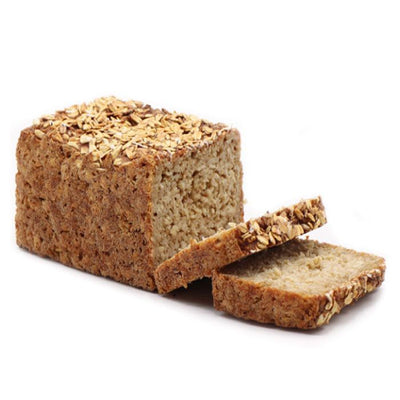The Sustainable Farming Practices Behind Organic Chana Dal Production
In a time where natural supportability and wellbeing awareness are at the front of shopper inclinations, natural cultivating rehearses have built up forward movement.
Natural horticulture supports a comprehensive way to deal with cultivating that underscores soil wellbeing, biodiversity, and the evasion of engineered synthetic substances. One such natural yield that represents these standards is Chana Dal, a staple in Indian cooking and a fundamental wellspring of plant-based protein.
In this article, we will delve into the sustainable farming practices that underpin the production of Organic Chana Dal, exploring the benefits it offers to both the environment and consumers.
Simplifying Chana Dal
Chana Dal, also known as split chickpeas, is derived from the Bengal gram. This vegetable is a rich wellspring of protein, fiber, and fundamental nutrients and minerals, pursuing it a famous decision for veggie lovers and vegetarians. While Chana Dal itself is nutritious, it's crucial to examine the farming methods used in its production to truly appreciate its sustainability and health benefits.
Essence of Organic Farming
Natural cultivating is on a very basic level established in the standards of manageability and environmental concordance. Not at all like ordinary cultivating, which frequently depends vigorously on engineered pesticides and composts, natural cultivating adopts a more regular strategy. Dal Chana production adheres to these principles, benefiting both the environment and consumers.
1. Soil Health and Biodiversity
The foundation of dal Chana production lies in nurturing soil health. Organic farmers prioritize soil as a living ecosystem, aiming to enhance its fertility and structure. They utilize practices, for example, crop pivot, cover editing, and the utilization of manure to normally improve the dirt.
Crop rotation involves alternating the cultivation of Chana Dal with other crops, which helps break the lifecycle of pests and diseases specific to chickpeas. This training limits the requirement for synthetic pesticides as well as keeps up with soil richness by forestalling supplement consumption.
Cover cropping involves planting non-harvested crops like clover or legumes in between Chana Dal growing seasons. These cover crops not only protect the soil from erosion but also fix nitrogen, reducing the reliance on synthetic nitrogen fertilizers.
Moreover, organic farms tend to have greater biodiversity. By staying away from the utilization of compound pesticides that hurt non-target organic entities, natural homesteads support the presence of useful bugs, birds, and microorganisms. This biodiversity helps normally direct vermin, advancing a better biological system.
2. Chemical-Free Cultivation
One of the central traits of dal Chana creation is the shortfall of engineered synthetic substances. Natural ranchers depend on normal and non-harmful techniques to control nuisances and infections.These methods include:
- Biological Pest Control: Empowering normal hunters of nuisances, like ladybugs or parasitic wasps, to hold bother populaces within proper limits.
- Neem Oil and Other Botanical Extracts: The utilization of neem oil and other plant-based extricates as normal insect poisons and fungicides.
- Companion Planting: Establishing buddy yields or spices that repulse bothers or draw in helpful bugs. For instance, marigolds can discourage aphids, and basil can draw in pollinators.
- Beneficial Microorganisms: Applying gainful microorganisms, as mycorrhizal organisms, to improve supplement take-up in plants.
By shunning manufactured synthetics, dal Chana creation limits mischief to the climate, diminishes substance deposits in the end result, and safeguards the wellbeing of farmworkers and close by networks.
3. Non-GMO and Heirloom Varieties
Dal Chana creation frequently includes the utilization of non-hereditarily adjusted life forms (GMOs) and legacy assortments. These customary, open-pollinated crop assortments have advanced over ages and are adjusted to neighborhood conditions. By developing non-GMO and treasure assortments, natural ranchers add to saving agrarian variety and lessening the dangers related with hereditarily designed crops.
Environmental Benefits
The sustainable farming practices underlying Dal Chana production have a profound impact on the environment:
Natural cultivating normally includes less energy-escalated rehearses, like the creation and utilization of manufactured manures and pesticides. Thus, Dal Chana creation will in general have a lower carbon impression contrasted with customary strategies.
Organic practices, including cover cropping and reduced tillage, promote soil conservation by preventing erosion and maintaining soil structure. This helps protect vital topsoil and reduces the sedimentation of water bodies.
The shortfall of manufactured pesticides and composts in natural cultivating adds to further developed water quality. Runoff from organic fields is less likely to contain harmful chemicals, reducing the pollution of waterways.
Natural ranches will generally uphold a more different scope of plant and animal species, adding to by and large biodiversity. This is critical for ecosystem stability and resilience.
Consumer Benefits
Buyers likewise stand to acquire a few advantages from picking Dal Channa:
Dal Chana is much of the time found to have more elevated levels of specific supplements, like cell reinforcements and fundamental minerals, because of the better soil where it is developed.
Dal Chana is less likely to contain pesticide residues and synthetic chemicals, offering consumers a safer and healthier option.
By choosing Dal Chana, consumers actively support sustainable and environmentally friendly agricultural practices, aligning their food choices with their values.
Dal Chana is typically non-GMO, providing consumers with the assurance that they are not consuming genetically modified organisms.
Challenges in Production
While organic farming practices offer numerous benefits, they are not without their challenges:
Organic farming methods often result in slightly lower crop yields compared to conventional methods. This can make organic Chana Dal production less economically attractive for some farmers.
Natural bugs and illness the executives can be more work concentrated and require a more profound comprehension of environmental connections. Farmers may face initial difficulties in transitioning to these methods.
To mark their items as natural, ranchers should go through accreditation processes, which can be exorbitant and tedious.
Organic products sometimes face limited market access and lower price premiums in certain regions, potentially affecting the profitability of organic Chana Dal production.
Future Prospects
The sustainable farming practices behind organic Chana Dal production are a testament to the potential for agriculture to be both environmentally friendly and nutritionally rich. As shoppers progressively focus on wellbeing and manageability, the interest for natural Chana Dal is supposed to develop.
To defeat the difficulties related with natural cultivating, policymakers, horticultural specialists, and industry partners can team up to:
- Offer help and motivators for ranchers progressing to natural practices, like sponsorships, preparing, and admittance to business sectors.
- Put resources into examination to foster natural bugs and infect the executives with techniques that are viable and proficient.
- Bring issues to light among shoppers about the advantages of picking natural items, hence expanding market interest.
- Lay out rigid natural affirmation guidelines and guidelines to keep up with the trustworthiness of natural items.
Importance of Consumer Awareness
Consumer awareness plays a crucial role in the promotion of organic Chana Dal production. As additional individuals become aware of the ecological effect of their food decisions, they are effectively searching out natural choices. Instructing buyers about the advantages of natural Chana Dal is fundamental. This can be achieved through awareness campaigns, food labeling, and information dissemination in stores and online platforms.
Local and Global Impact
Natural Chana Dal creation benefits individual purchasers as well as has a more extensive effect.
- At the neighborhood level, it upholds provincial networks by giving work amazing open doors and improving the monetary steadiness of cultivating locales.
- Also, the diminished utilization of engineered synthetic compounds safeguards the wellbeing of farmworkers and close by networks.
- On a worldwide scale, the reception of supportable cultivating rehearses, as found in natural Chana Dal creation, adds to moderating the adverse consequences of environmental change.
- Natural cultivating normally sequesters more carbon in the dirt, decreasing ozone depleting substance discharges.
- This lines up with worldwide endeavors to battle environmental change and accomplish practical advancement objectives.
Role of Technology in Organic Farming
Types of progress in development are helping normal farmers with keeping an eye on a piece of the challenges they face. Imaginative devices and methods, like accuracy horticulture, robots, and information examination, can help with improving natural cultivating rehearses.
For example, accurate horticulture permits ranchers to screen soil conditions and harvest wellbeing all the more, prompting better returns and decreased asset wastage. The integration of such technologies into organic Chana Dal production can enhance its economic viability.
Supporting Research and Innovation
Putting resources into rural exploration and development is critical for the outcome of natural Chana Dal creation. Researchers can develop new organic pest management strategies, drought-resistant crop varieties, and sustainable farming techniques. Government and industry partnerships can fund research initiatives that address specific challenges faced by organic farmers, ultimately improving their productivity and resilience.
Global Perspective on Organic Agriculture
The adoption of organic farming practices extends beyond Chana Dal production. It is important for a worldwide development towards more supportable and harmless ecosystem farming. Policymakers, both broadly and universally, are perceiving the significance of supporting natural horticulture as a way to address food security, moderate normal assets, and lessen the environmental impression of cultivating.
Conclusion
In conclusion, organic Chana Dal production exemplifies the sustainable farming practices that can contribute to a healthier planet and healthier consumers. By nurturing soil health, avoiding synthetic chemicals, and prioritizing biodiversity, organic farmers not only produce a nutritious legume but also help protect the environment.
As consumer awareness grows, and as technology and research continue to advance, the future of organic Chana Dal production looks promising. It remains as a brilliant illustration of what can be accomplished when we focus on maintainability in farming.













